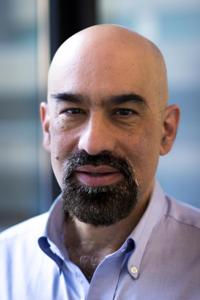Jan 19 2015
The American Astronomical Society (AAS) and the American Institute of Physics (AIP) announced today that Princeton University's David Spergel is a winner of the 2015 Dannie Heineman Prize for Astrophysics, one of the top prizes in the field which is awarded annually to outstanding mid-career scientists.
 David Spergel, Princeton University, is a winner of the 2015 Dannie Heineman Prize. Credit: Spergel
David Spergel, Princeton University, is a winner of the 2015 Dannie Heineman Prize. Credit: Spergel
The award carries a cash prize of $10,000 to be split between Spergel and his co-winner, Marc Kamionkowski of Johns Hopkins University. For information on his co-winner see: http://www.aip.org/news/2015/baltimore-astrophysicist-marc-kamionkowski-wins-2015-dannie-heineman-prize.
The two researchers are receiving the award "for their outstanding contributions to the investigation of the fluctuations of the cosmic microwave background that have led to major breakthroughs in our understanding of the universe," according to the selection committee.
"David Spergel's work has uncovered fundamental new ways of understanding the nature of the universe," said Fred Dylla, AIP executive director and CEO. "The field of cosmology would not be the same without his outstanding contributions."
The two winners, Spergel and Kamionkowski, will both receive their recognitions at an upcoming AAS meeting, Dylla added.
"Marc and David have taught us how to read the subtle bumps and swirls in our exquisite image of the early universe to reveal what happened in the moments of creation," said David J. Helfand, who is President of Quest University Canada and Past President of AAS.
Spergel received his Ph.D. from Harvard in 1985 and joined the Princeton faculty in 1987 after spending two years at the Institute for Advanced Study in Princeton, New Jersey. He is the recipient of numerous awards, including the MacArthur Fellowship in 2001, and has served as a mentor to over 60 graduate students and postdocs.
In the 1990s, Spergel collaborated with Kamionkowski on a series of papers that proposed a way to determine the spatial geometry of the universe using temperature maps of the cosmic microwave background--the residual thermal energy left over from the Big Bang.
He also served as the lead theorist on the Wilkinson Microwave Anisotropy Probe (WMAP) project, a NASA explorer mission launched in 2001. "WMAP made very accurate measurements of the microwave background fluctuations, and we used them to determine the age, composition and shape of the," said Spergel. Reacting to his selection as winner of the prize, he added: "The list of people who have won in the past is very distinguished, and it's an honor to be included."
Currently, he is involved in NASA's Wide Field Infrared Survey Telescope (WFIRST), a Hubble successor that will image nearby planets and study dark energy, as well as the Atacama Cosmology Telescope, a high resolution microwave background telescope based in Chile. He is also the chair of the National Academies' Space Studies Board, which advises the federal government on space policy.